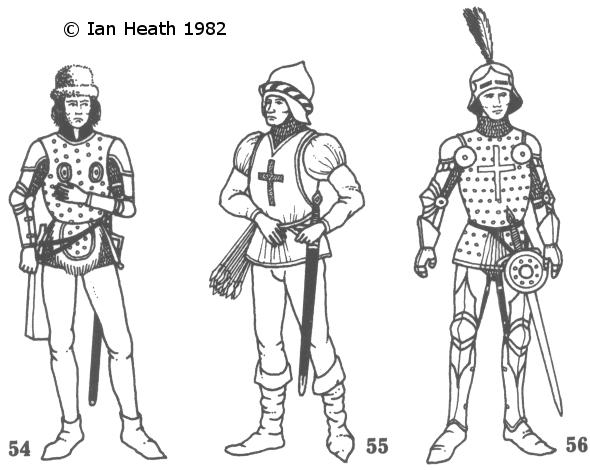
Try Amazon Audible Plus
SOLDIERS OF THE HUNDRED YEARS' WAR FROM 15th CENTURY EDITONS OF FROISSART
An extract from Armies of the Middle Ages, Volume 1by Ian Heath
 [Based on a MS. similar to 'Chronicles' by Jean Froissart, Bruges, Belgium, c.1470-1475AD. Artist: Loyset Liédet et al. BnF MS Français 2643 | ||
| Battle of Crecy | Battle of Auray | Capture of Caen] |
